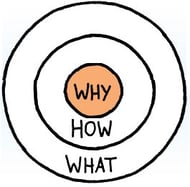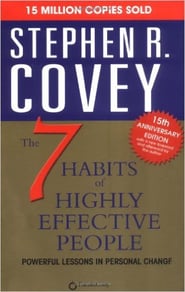Transitioning to a leadership role is a challenging career move. You must go from follower to being the one who guides, motivates, inspires and manages. The transition takes time, experience, skills and commitment. Here are 5 resources to help you prepare for your new role:

5 resources for teachers moving into SLT
1. Leadership is not a trait possessed only by extraordinary people
Drew Dudley's message is that we have all changed someone's life - usually without even realising it. In his TED talk, he claims that we have made 'leadership' into something bigger than us. We've taken the title of 'leader' and treated it as if it's something that we might deserve one-day.
What we don't realise, says Drew, is that it is the little everyday moments that define leaders in big ways. We take moments where we truly are a leader and don't let ourselves take credit for it; maybe the biggest impact you've had on somebody's life is a moment you don't even remember.
Drew tells a humourous, sweet anecdote about his 'lollipop moment' to help you put the idea of leadership into perspective.
2. All the most successful leaders act, communicate and think in the same way
According to Simon Sinek, the reason some people are able to inspire when others can't is because they abide by the 'golden circle'.
The Golden Circle
-
Why - the leader's core purpose, cause or belief; the reason why they have taken on their role
-
How - the leader's plan for how to achieve their core purpose
-
What - what the leader does everyday to achieve their core purpose
"People don't buy what they do, they buy why you do it." - Simon Sinek
Effective leaders start with the why before moving onto the how and the what. They clearly identify their purpose then use it to underpin everything they do and inform every decision they make. Unsuccessful leaders tend to begin with the how or what and may lose sight of the why.
3. It's rarely the instigator who is the driving force behind a movement
Derek Sivers claims that the first person who begins to follow an instigator is really the true leader.
“A leader needs the guts to stand out and be ridiculed. The first follower is what transforms a ‘lone nut’ into a leader.” - Derek Sivers
In his TED talk, he shares some amusing footage to shed some light on how one person can inspire a crowd of followers. Check it out:
4. Establish your 'end' at the start
Malcolm Drakes, Headteacher at Broadford Primary School is an example of Simon Sinek's great leaders who start with the why. He says:
"You'll need to begin with the end in mind... How will the ethos be evident? Why will your staff fight through wind, rain and the flu to get to work in mid March... what compelling reason will they have?"
Malcolm's golden nugget of advice for other leaders is to establish your 'end', communicate your vision and then relentlessly base everything you do on achieving that.
Basing everything on achieving his goal has helped Malcolm lead his school in moving from Special Measures to Outstanding in just 2 years. Watch this video to find out more about Broadford Primary School's incredible journey:
5. Highly effective people share the same 7 habits
In his best-selling book, The 7 Habits of Highly Effective People: Powerful Lessons in Personal Change, Stephen Covey suggests a holistic, integrated and principle-centered solution to solving both your personal and professional problems. Stephen's lesson is that, to change the way you see the world, you have to change yourself and your perception.
According to Stephen, highly effective people practice the same 7 habits. Start giving them a go and reap the benefits in your everyday life.
7 habits of highly effective people
-
Be proactive
-
Begin with the end in mind
-
Put first things first
-
Think win-win
-
Seek first to understand, then to be understood
-
Synergise
-
Sharpen the saw
We’ve created a free e-book that goes into more detail about each of these leadership tools, plus many more, to give you and all current and aspiring headteachers and school leaders a helping hand in being as effective and inspirational as possible in your roles. Download it here >






Leave a comment:
Get blog notifications
Keep up to date with our latest professional learning blogs.